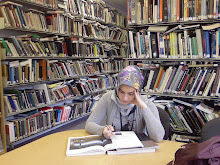oil on canvas, dimensions 152.5 cm x 152.5cm.(www.pip-dickens.com)
 copyright Pip Dickens
copyright Pip Dickens
 copyright Pip Dickens
copyright Pip Dickens
Pattern Information
Moiré patterns are often an undesired artifact of images produced by various digital imaging and computer graphics techniques, for example when scanning a halftone picture or ray tracing a checkered plane (the latter being a special case of aliasing, due to undersampling a fine regular pattern).[1]
The drawing on the upper right shows a moiré pattern. The lines could represent fibers in moiré silk, or lines drawn on paper or on a computer screen. The nonlinear interaction of the optical patterns of lines creates a real and visible pattern of roughly parallel dark and light bands, the moiré pattern, superimposed on the lines.[2]
More complex line moiré patterns are created if the lines are curved or not exactly parallel. Moiré patterns revealing complex shapes, or sequences of symbols embedded in one of the layers (in form of periodically repeated compressed shapes) are created with shape moiré, otherwise called band moiré patterns. One of the most important properties of shape moiré is its ability to magnify tiny shapes along either one or both axes, that is, stretching. A common 2D example of moiré magnification occurs when viewing a chain-link fence through a second chain-link fence of identical design. The fine structure of the design is visible even at great distances.
Geometrical approach

the patterns are superimposed in the mid-width of the figure
Let us consider two patterns made of parallel and equidistant lines, e.g., vertical lines. The step of the first pattern is p, the step of the second is p+δp, with 0<δ<1.
If the lines of the patterns are superimposed at the left of the figure, the shift between the lines increase when going to the right. After a given number of lines, the patterns are opposed: the lines of the second pattern are between the lines of the first pattern. If we look from a far distance, we have the feeling of pale zones when the lines are superimposed, (there is white between the lines), and of dark zones when the lines are "opposed".
Rotated patterns

Moiré obtained by the superimposition of two similar patterns rotated by an angle α
Let us consider two patterns with the same step p, but the second pattern is turned by an angle α. Seen from far, we can also see dark and pale lines: the pale lines correspond to the lines of nodes, that is, lines passing through the intersections of the two patterns.
If we consider a cell of the "net", we can see that the cell is a rhombus: it is a parallelogram with the four sides equal to d = p/sin α; (we have a right triangle which hypothenuse is d and the side opposed to the α angle is p).

No comments:
Post a Comment